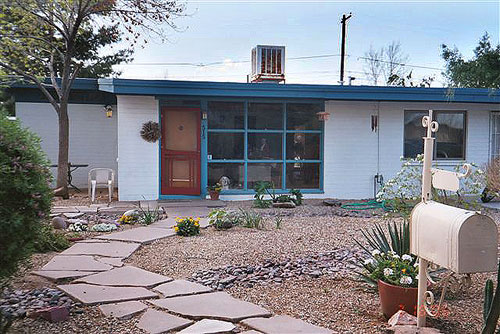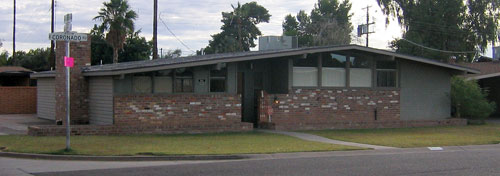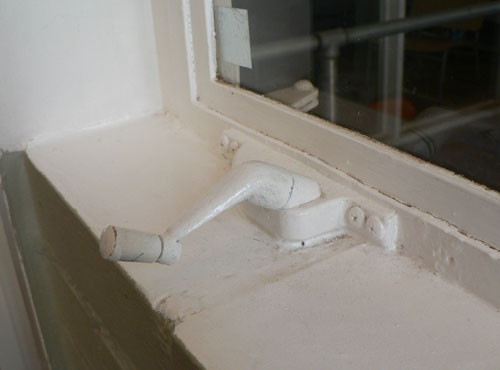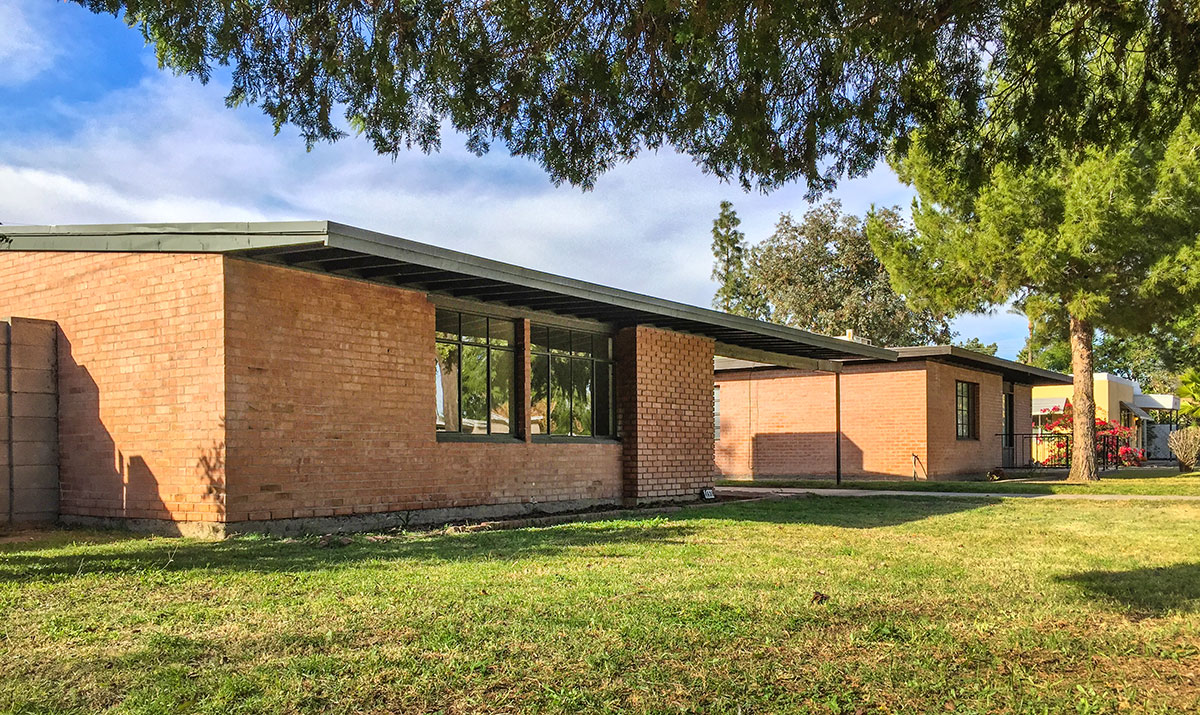- Index
- Chronology
- Neighborhoods
- Portfolio
- Ralph Haver
- Commercial
- Customs
- Characteristics
- Family Story
- Jimmie Nunn
- Civic Spaces
- Awards
- James Salter
- Multifamily
- Have a Haver?
Do I Have a Haver Home?
Since Haver Homes often are difficult to differentiate from other similar designs, and since blueprints confirming the architect are rare to come by and often not found on file with the city or county, this taxonomy might help you identify your potential Haver Home.Disclaimer: This rubric is provided as a tool, not a professional appraisal. Modern Phoenix LLC is held harmless for any claim that a home is a Haver, particularly in real estate listings. If you are unsure, contact Modern Phoenix LLC for a professional consultation.
Is the home located in one of the known Haverhoods?
- If yes, chances are your home is a Haver, too.
- If no, you might have a custom Haver home or a stock design that happens to not be in a tract. Custom homes are rare, tract homes are ubiquitous. Or, you might live in a neighborhood we don't already know about, so send us plenty of photos and some cross-streets.

Does it have a low pitched roofline?
- If yes, is it low-slung enough? A typical slope is a 1" rise to every 12" with a maximum roof height of 11 or 12 feet.
- If no, you probably don't have a Haver on your hands. Nearly all residences have a low pitched roof with rare exceptions noted at the end of this list, especially Campus Homes.

Is the home constructed primarily of red brick or CMU block supported by wooden beams?
- If yes, your home may also feature wainscoting on the front elevation, or board-and-batten panels above the wainscoting.
- If built before 1972 and not made of brick, you probably do not have a Haver. All known residences before this time are red brick or cement block.
- If built after 1972, it is possible that your wood frame and stucco home might be of Haver origin.

Does it have clinker-brick wainscoting?
- If yes, Haver's family is the only prolific builder that we know of who used this technique on a mass in the Valley. Compare to Town and Country homes.
- If no, does the wainscoting have some kind of character such as a patterned texture, relief blocks or other integral design? Most Haver designs did not feature wainscoting, but if yours does, that's special.

Does it have a massive rectangular chimney volume that is a prominent feature of the home's elevation, sometimes interrupting a window bank?
- If yes, your Haver hearth most likely has no mantle and is naked, as shown above.
- If no, you might just have a chimney-less home.

Does it have floor to ceiling windows or a strip of "cathedral windows" that straddle the roof peak?
- If yes, the panes should be primarily undivided and large scaled plate glass, with the exception noted of the 9-pane configuration below.
- If no, there are many known Haver homes without floor to ceiling windows.

Does it have a large wall of floor-to-ceiling windows in a nine-pane configuration?
- If yes, compare your home to those in Camelback Park Estates and Campus Homes which are both suspected (but not yet confirmed) Haver Homes.
- If no, there are plenty of known Haver homes without this configuration, but no known examples of other pane configurations such as 8, 12 or 16.


Does it have clerestory windows immediately beneath the roofline?
- If yes, compare to Marlen Grove style.
- If no, you could just have a Haver without clerestories, which are abundant.

Does it have large-paned windows beneath the roofline that mirror the roof's angle?
- If yes, compare to Town and Country and Rancho Vista.
- If no, you could just have a plain old Haver, or a remodel that eliminates the feature.

Does it have a patio shade structure that is a natural extension of the roofline creating an outdoor room?
- If yes, compare to Marlen Grove, Town and Country and Rancho Vista.
- If no, is the porch an important feature of the home's plan? Outdoor living was an important feature of Haver-style living.

Does it have plate glass casement (crank) windows?
- If yes, your home is probably an earlier model.
- If no, your home might be a later model when this feature fell out of fashion.

Does it have block construction room dividers that reach only 3/4 of the way to the ceiling? Or an open wooden bookshelf room divider built into the entryway?
- If yes, compare to Tonka Vista and Marlen Grove models. (example shown here many not be original, source pictures sought of room dividers)
- If no, your home just might not have this rare interior feature.
Does it have casement or divided-pane windows that wrap around a corner?
- If yes, your home is probably an earlier model.
- If no, your home might be a later model when this feature fell out of fashion.

Does it have wooden "spider legs": tapered carport columns, or porch posts supporting other roofline elements?
- If yes, compare to Marlen Grove and Canal North styles.
- If no, there should be an integrated carport of some sort. Enclosed garages were rare.
Do the roof beams penetrate the wall and sometimes extend past the roofline?
- If yes, compare to Windemere and Marlen Grove styles as well as Barrow's Furniture. Their beams often penetrate out past the roofline.
- If no, you could just have a normal roof.

Does it feature plain and economical block fenestration using patterns of stacked blocks and voids?
- If yes, compare to Starlite Vista. This neighborhood has excellent examples of blocks being used decoratively in simple ways.
- If no, you could just have a plain Haver. If the block itself is fenestrated (like the ModernPhoenix logo) chances are it is not a Haver or it is a later-era addition.

Does it have pigmented concrete floors?
- If yes, are they burgundy or yellow ochre? These are the most popular known colors used. It is not uncommon for Haver Home owners to restore these concrete finishes to beautifully weathered, polished surfaces.
- If no, are there any exposed unpigmented concrete pads in interior spaces?

Is there a patio of red brick laid in herringbone or basket-weave pattern?
- If yes, this is a tradition for Haver family residences, and you could have a custom home.
- If no, it is unknown whether this craft carried over into tract homes.

Was the home built after 1945 and before 1986?
- If yes, it could be a Haver. His most prolific years for residential building were the mid 1950s.
- If no, its not a Haver. He was not building in the valley before '45 or after he died in 1987.
Is the home rather normal looking compared to other Havers?
- If yes, don't get discouraged. Haver designed several red brick tract homes near 7th Avenue and Butler and hundreds in the southwest that have few if any modern Haver characteristics. Who knows what other kinds of homes he designed on the down-low!
- If no, you might want to trust your gut and ask one of our Preferred Realtors or reach out to Modern Phoenix LLC for a one-hour consultation. Chances are if it looks like a Haver using the criteria above, it probably is.


